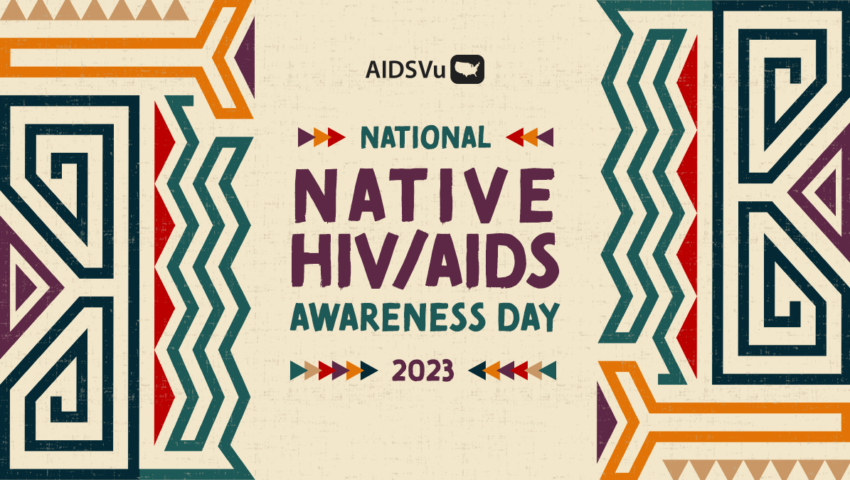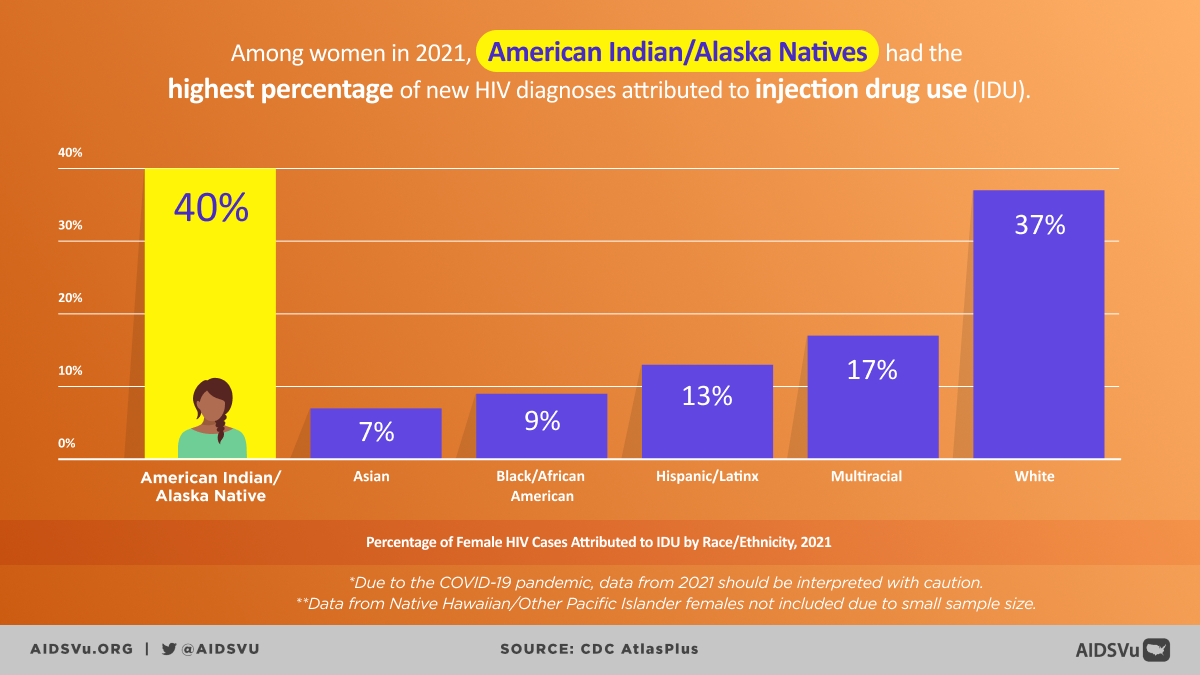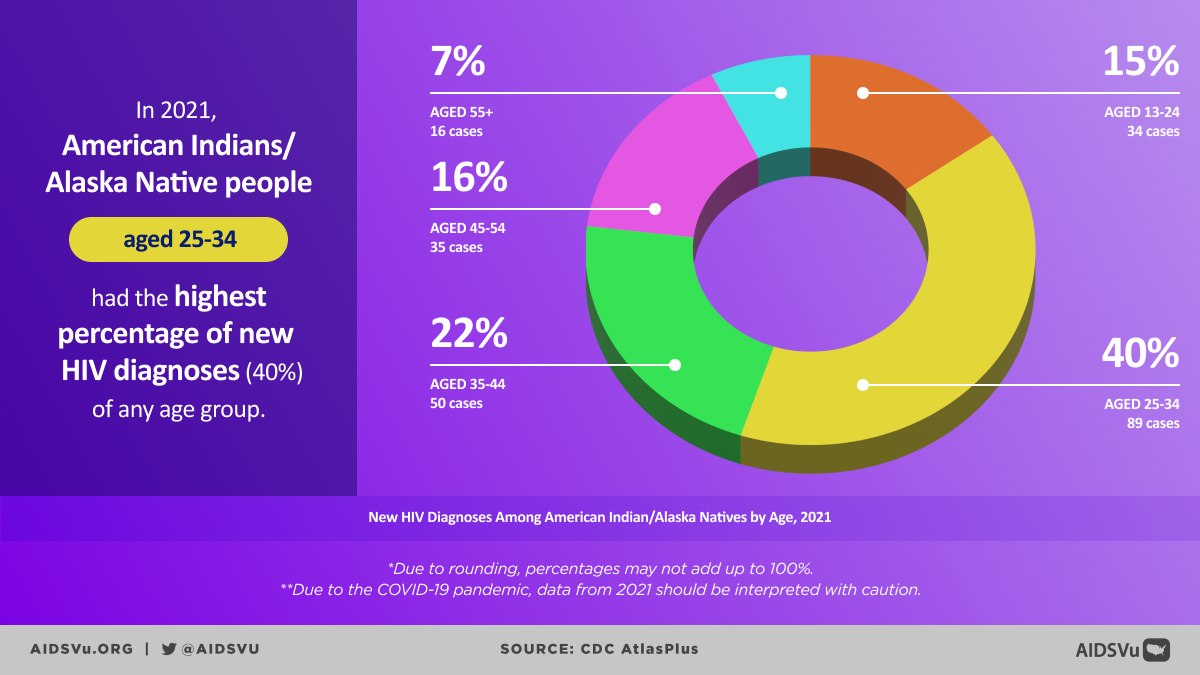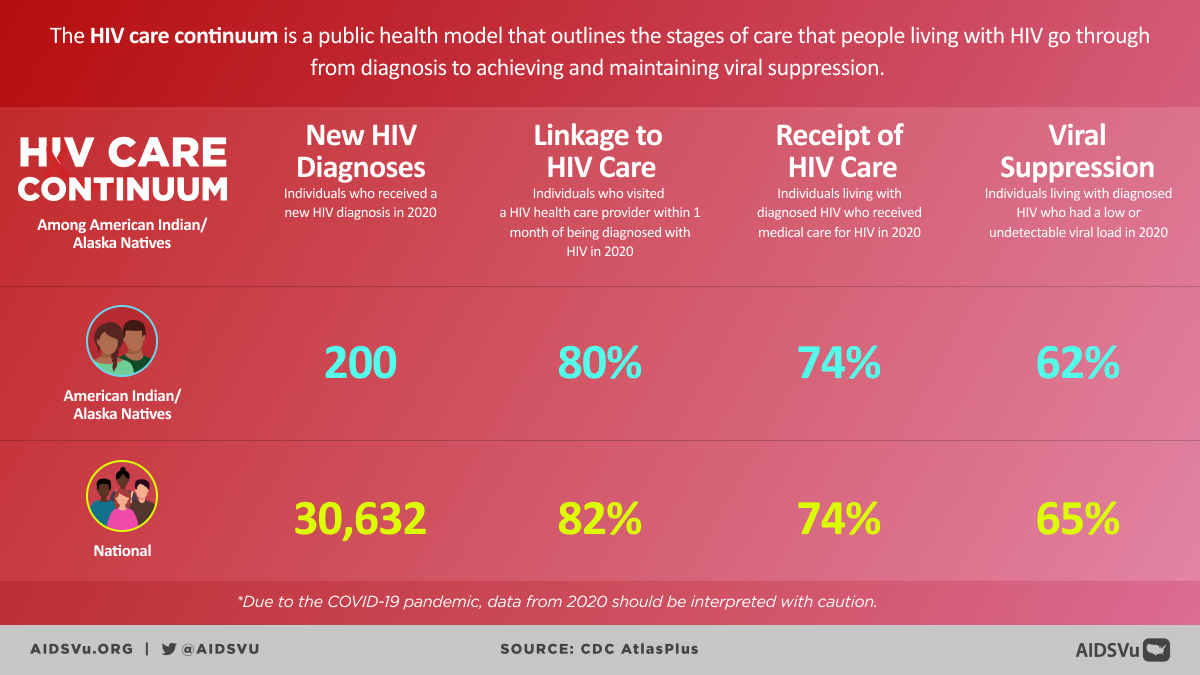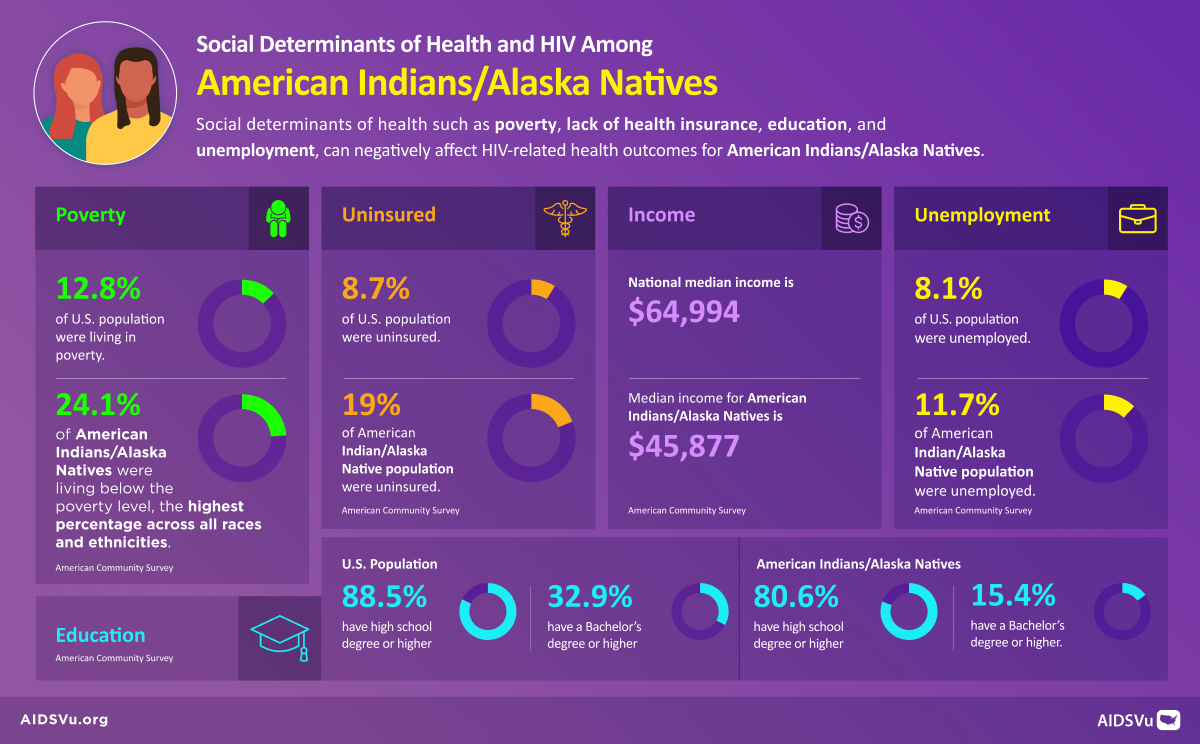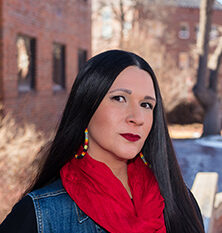Held each year on the first day of spring, NNHAAD was chosen by the Native community to be held on this day as it represents a “celebration of life for all people”. This year’s theme is “Weaving our Horizon: Strength. CommUnity. Equity.”
Certain age groups in the American Indian/Alaska Native (AI/AN) community are more affected by HIV/AIDS. In 2021, young American Indians/Alaska Native people (AI/AN) aged 25-34 had the highest percentage (40%) of new HIV diagnoses of any age group. This percentage increased from 2020, when American Indians/Alaska Native people aged 25-34 accounted for 36% of new HIV diagnoses.
Additionally, among all women in 2021, American Indian/Alaska Native (AI/AN) women had the highest percentage (40%) of new HIV diagnoses attributed to injection drug use (IDU) when compared to other races and ethnicities.
It is also important to recognize how social determinants of health can negatively impact HIV-related health outcomes for AI/AN communities due to a lack of access to affordable health care and financial insecurity. For example:
- 1% of the AI/AN population were living below the poverty level, compared to 12.8% of the U.S. population.
- 19% of the AI/AN population were uninsured, compared to 8.7% of the U.S. population.

To learn more about how the HIV epidemic impacts Native communities, explore these AIDSVu resources:
- Visualize HIV data in Native communities stratified by age, sex, and transmission categories on AIDSVu’s interactive maps.
- Explore ourlocal data profiles to learn about HIV/AIDS in your area.
- Find available HIV testing and care services near you with AIDSVu’s service locators.
- Read expert-led Q&A blogsto deepen your understanding of HIV/AIDS among Native communities.
- Ramona Beltran on Health Disparities in Native Communities
- Injection Drug Use and Hepatitis C Trends in the Indian Health Service
- Harlan Pruden on National Native HIV/AIDS Awareness Day
- Share our infographics with your networks to raise awareness.

